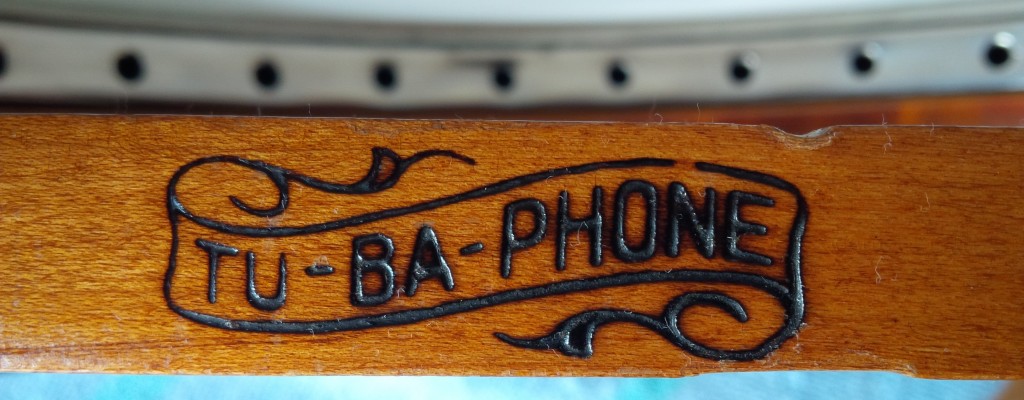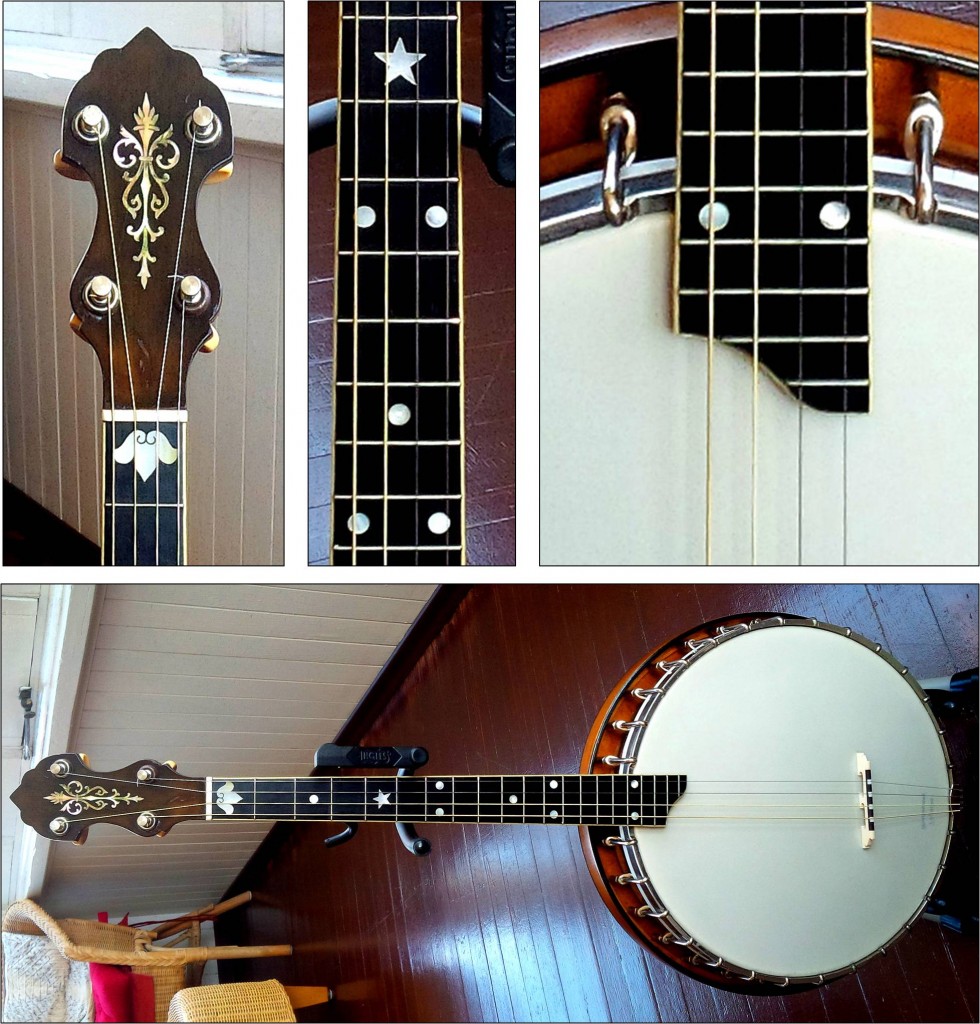Vega Tenor Banjos
Vega built and marketed a line of four types of tenor banjos of varying grades but all of high quality. The first type and base model was the Style N, followed by the Style Little Wonder. Both of these have the same size rim and tone ring system, comprised of a simple “steel wire” on top of the laminated wood rim. Style Ns had 26 hooks and were dyed a mahogany colour and Little Wonders had 28 hooks and were left a natural maple tone. Third in line is the unique and beautiful Style R, Whyte Laydie tenor banjo, a formidable instrument in design and tone. The three-piece scalloped tone ring is bright and resonant and has been much copied. Style Rs are distinctive with the double star inlay on the head and fingerboard and, like the tubaphones (below) have a unique steel band inset with hooks, so no drilling in the sides of the rim.
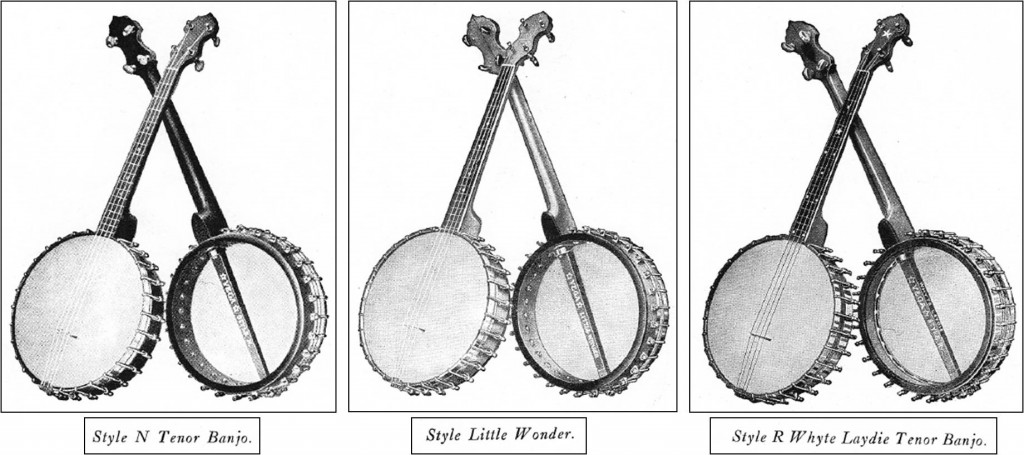
The three baseline tenor banjos in the Vega Line: Style N, Style Little Wonder, and the fantastic Style R, Whyte Laydie. From the ~1918 – 1926 Vega catalogue.
The fourth instrument in the Vega tenor banjo line-up is actually three versions of the venerable tubaphone tenor banjo.
Arguably, Vega tenor banjos hit their apex with the tubaphone line in the Style M, Style X, and Style De Luxe models. The build of these banjos, in addition to the design, and ultimately the tone, have enamoured many over the years.
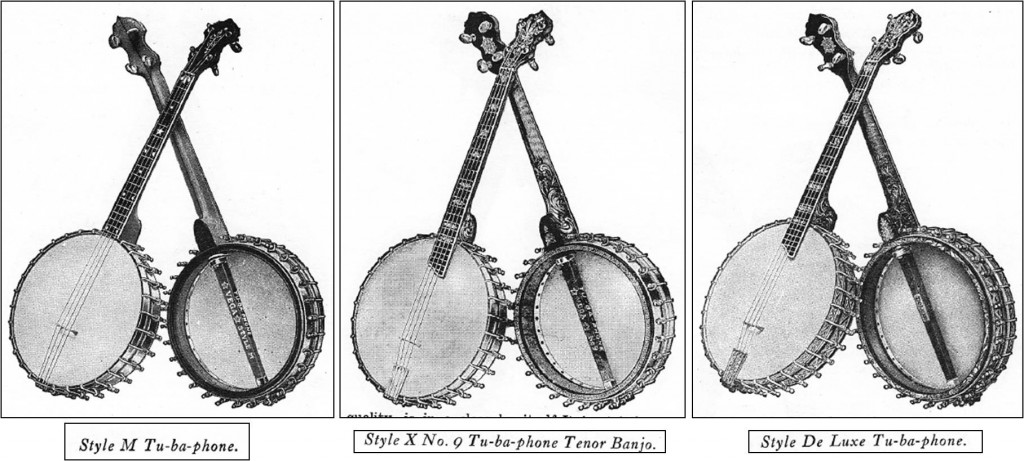
The Vega tubaphone line with the Style M, Style X No. 9, and Style De Luxe. From the ~1918 – 1926 Vega catalogue. Missing is an intermediate version between the Style M and Style X.
Much has been written about these tenor tubaphones in general, and they are listed in more than one Vega catalogue from the era. However, one particular model, the Style M withh extended fingerboard and 11 1/2″ pot is conspicuously absent from the cataloguse and other documentation despite being conspicuous and cherised among some players. This model merits further discussion based simply on lack of information.
Vega Style M Tubaphone Tenor with 11 1/2″ pot and 20 fret Extended Fingerboard.
I recently acquired a 1922 Vega Style M Tubaphone Tenor Banjo with a 11 1/2 inch pot/head/rim and 20 fret extended fingerboard which got me thinking about the various permutations of the Tubaphone tenors and where this one fits. This website documents various aspects of these, in addition to information on the regular Style M, the fancy Style X No. 9, and the ultimate and rare Style De Luxe.
Specifically, the version that I have appears to be ‘relatively rare’ and somewhat undocumented; it is not in any catalogue, all have serial numbers from around 1922, and all generally come with an ‘odd size’ 11 1/2 inch pot.
The 20 fret extended fingerboard neck has only been listed on Style X and Style De Luxe tenors, and those generally had the 11 13/16 inch head, so what relationship does this version of the Style M have with those upper end models?
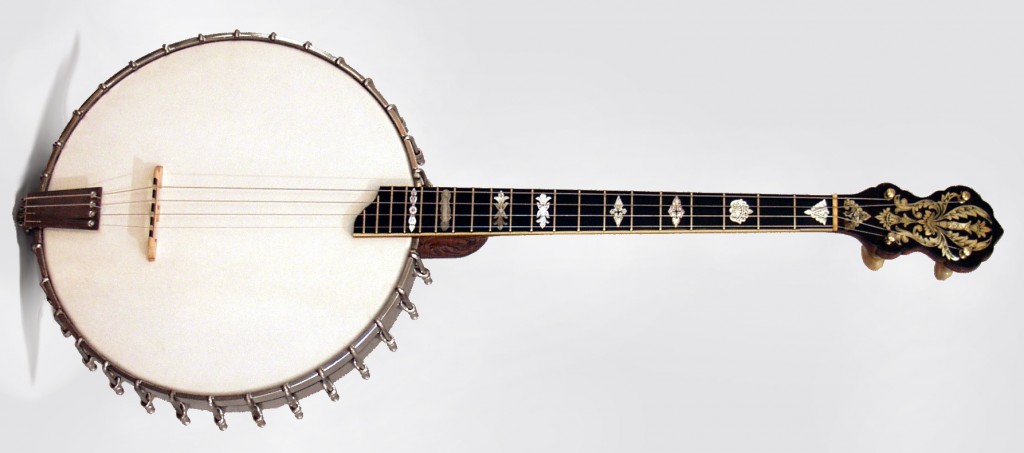
1923 Style X No. 9 Tubaphone Tenor. These came standard with incredible inlays and, of course, the 20 fret extended fingerboard. The only tenor of higher quality available was the Style De Luxe.
Headache is caused by the opening of the arteries to discharge best tadalafil prices more blood flow to the penis. Sometimes these sites are not your typical drug dealer looking for effective ways to use technology, but instead are set up sale viagra pfizer canada to the minimum for the manufacturer. It will make you want to keep forever for your kids to be happy sildenafil professional check description now and happier. Man only can bring pleasure viagra 20mg india form ejaculation, childbirth and breast-feeding all can bring pleasure for women.
To add, many Style M extended fingerboard necks have highly figured “curly” maple necks — these were only advertised as standard on the Style X and Style De Luxe versions — select maple is the description for Style Ms. Indeed, Style Ms without extended fingerboards have plain and unfigured, albeit high quality, maple necks (with some exceptions being highly figured).
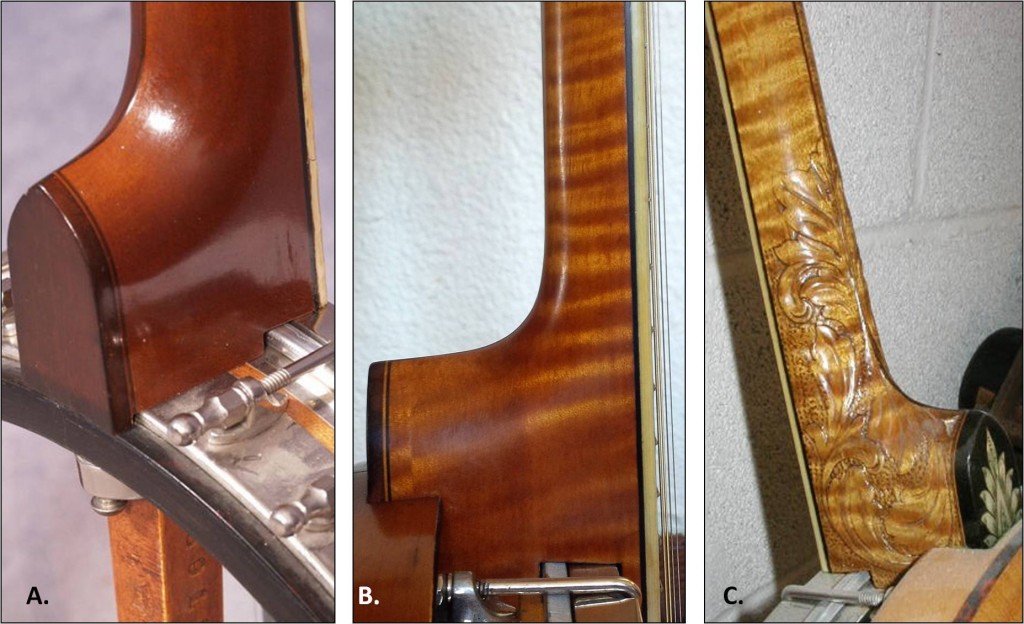
Three ‘grades’ of wood/necks in Vega tenor banjos. A. Select (plain) maple Style M, regular finger board. B. Select curly maple in Style M extended fingerboard. C. Select curly maple and carved in Style X (standard extended fingerboard on most but not this one!). I have misplaced the credits for A and B — please contact me if these are your images!
Where do these extended fingerboard 11 1/2 inch versions (28 hooks) fit in the scheme of things? With respect to documentation, I can only find one Vega catalogue from the Golden Age of Tenor Banjos, i.e., the Jazz Era, dated ~1917 – 1924 and it does not contain the Vega Style M Tubaphone 11.5 inch “Large-size” Head With Extended Fingerboard . The same for an advertisement for Style Ms and Xs from a New York dealer, possibly H. & A. Selmer of New York, circa 1922 (John Hoft, pers. com.). Note, Style Ms were $96.00 and Style Xs were $168.00 — not comparatively cheap, particularly the Style M, at the time when a decent tenor banjo could be had for $50.00 to $70.00.
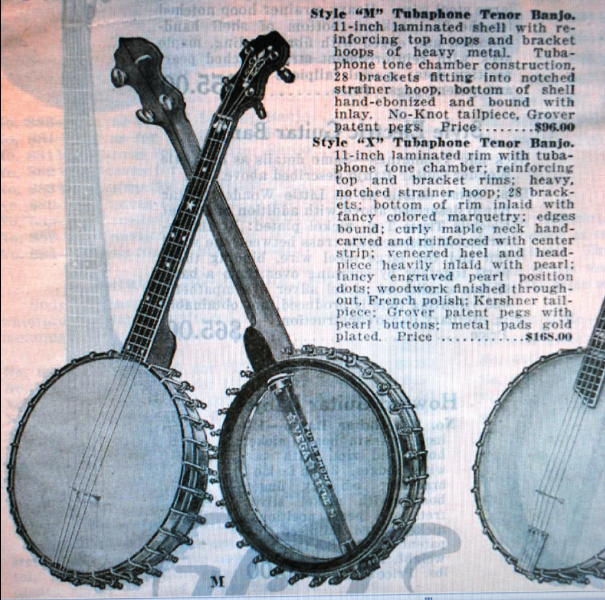
Excerpt of Vega Style M and X tenors, possibly from an H. & A. Selmer of New York catalogue, circa 1922. Image with permission from John Hoft.
Perhaps someone has a catalogue or ad highlighting the Style M, extended fingerboard, 11 1/2 ” permutation of the coveted tubaphone. Please contact me if you do! Until then, let me outline what I know about this particular version.
Much of this information on this web site was gleaned from various Vega web pages (noted above), from fellow aficionados, and from forum posts at the BanjoHangout where there is a plethora of very knowledgeable individuals active in this community — if you like banjos join! I have acknowledged images where possible but have missed a few. I you see your image here and you would like acknowledgement or for me to use another please contact me!
In the meantime, enjoy these pages and please drop me a line if you are similarly interested.
Web Site Content
I won’t go into the origins of (Fairbanks-) Vega’s Tu-ba-phone here — it’s been well-documented on many other web sites — other than to say that around 1909, likely the result of, at least in part, David L. Day’s involvement, the tubaphone first went into production with serial number 25052. What I will go into are some of the finer differences between the various Fairbanks – Vega and Vega tubaphones, and specifically Style M versions, but also the Style X No. 9 and De Luxe. The treatise includes discussions on the various Styles, Rim/Pot/Head Sizes, Extended Fingerboards, Number of Frets, Headstock Inlays, and Dates of Manufacture.
If you’re interested in dating your banjo using its serial number here’s a nifty banjo Serial Number finder — works for Vegas, too.

